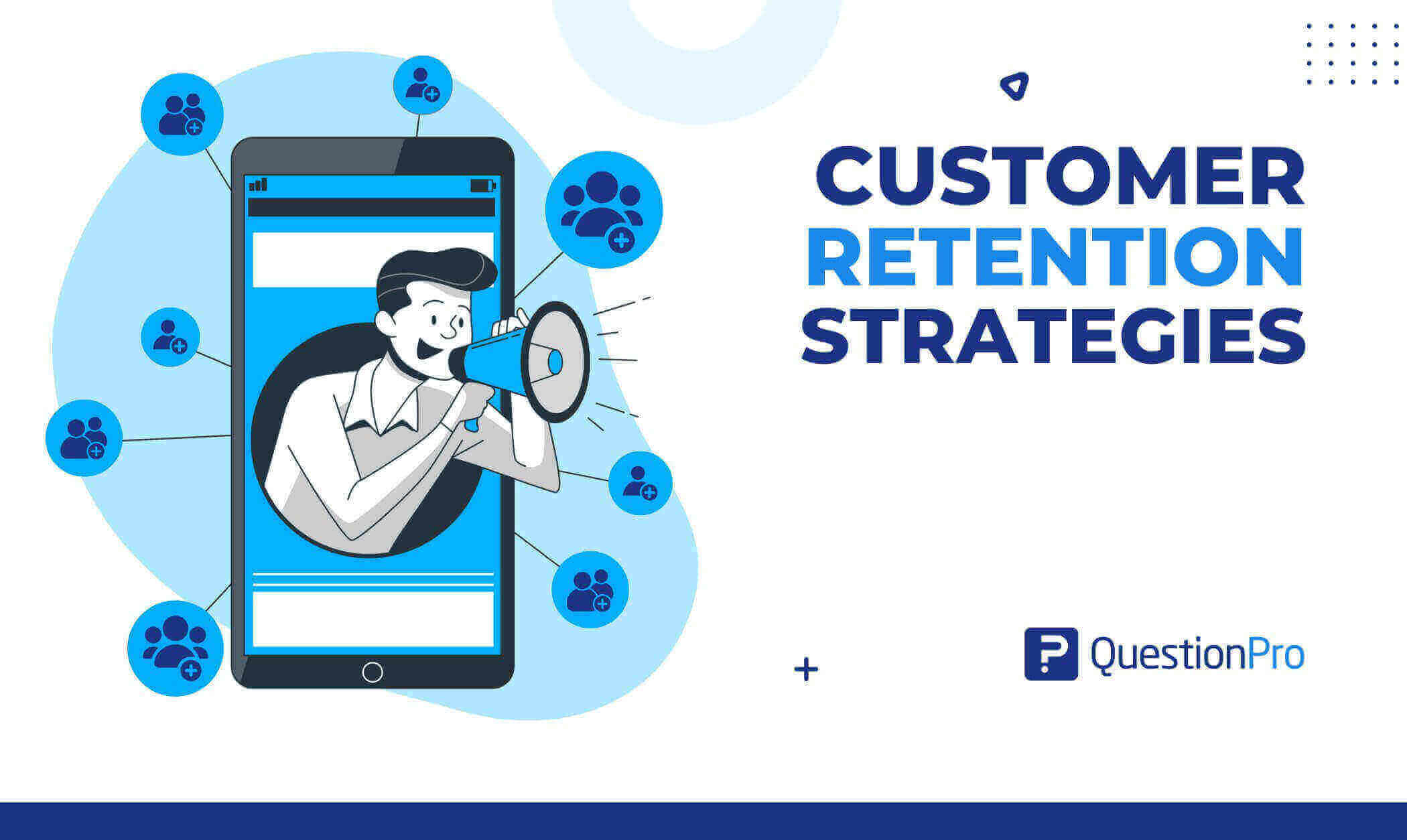
While attracting new customers is important, retaining existing ones is often more cost-effective and leads to higher profits. Customer retention strategies are the thoughtful actions businesses take to keep their customers happy, loyal, and coming back.
They’re not just about preventing people from leaving but about making customers feel valued and appreciated at every step. It can be through a warm thank-you email, a surprise discount, or simply being there when they need support, these strategies aim to build trust and lasting connections.
At the heart of it, it’s all about creating experiences that make people say, “Yes, I want to stick with this brand.” And when customers feel that kind of connection, they’re more likely to stay loyal, spread the word, and continue investing in your business over time.
In this article, we’ll walk you through 15 proven customer retention strategies that actually work. From offering top-notch customer service to using personalized communication and loyalty programs, these strategies will help you create meaningful experiences that keep your customers coming back for more.
What are Customer Retention Strategies?
Customer retention strategies are specific actions and techniques businesses use to keep their existing customers engaged, satisfied, and coming back. These strategies focus on building long-term relationships rather than just making one-time sales.
The main goal of these strategies is to increase customer lifetime value by encouraging repeat purchases, improving brand loyalty, and reducing churn. When done right, customer retention not only boosts profits but also turns customers into brand advocates who help grow your business through referrals and positive reviews.
Learn More: What is the customer retention rate?
Why is Customer Retention Important for Businesses?
Customer retention is crucial for businesses because it directly impacts profitability, growth, and long-term success. Businesses that focus on strategies to retain customers benefit from higher loyalty, lower costs, and sustainable revenue. Here are the key reasons why it matters:
- It’s Cheaper Than Finding New Customers
Getting a new customer usually costs more money than keeping an existing one. You don’t have to spend extra on ads or marketing if someone already knows and trusts your brand.
- Loyal Customers Spend More
People who come back again and again often spend more over time. They’re more likely to try new products or services because they already trust your business.
- Word of Mouth Brings in New Customers
Happy, loyal, and satisfied customers often tell their friends and family about your brand. That kind of free promotion is super valuable and can bring in even more loyal customers. It helps build trust and goodwill, which can encourage customers to recommend your brand to others.
- It Builds a Stronger Brand
When customers stick around, it means they believe in your brand. That trust helps your business grow and stay strong over time.
15 Best Customer Retention Strategies to Follow
Customer retention is key to growing any business. It’s not just about bringing new customers in, but keeping the ones you have happy and loyal. When customers stick around, they become more than just buyers; they turn into advocates for your brand.
Here are 13 effective strategies to increase customer retention and ensure your business’s success.
1. Truly Understand Your Customers
Before you can keep your customers, you need to know who they are and what they care about. Use surveys, interviews, and data analytics to get a deep understanding of customer behavior, preferences, pain points, and goals. This helps you customize your product or service to meet their needs more effectively.
Pro Tip: Tools like customer journey maps and voice-of-customer surveys can reveal what’s working and what needs improvement in their experience.
2. Personalize the Customer Experience
Nobody wants to feel like just another number. Personalization goes a long way in making customers feel special. Whether it’s using their name in an email, offering product recommendations based on past behavior, or remembering their preferences, these small touches create meaningful experiences.
For example, ThriveMarket uses quizzes to customize shopping experiences, which helps customers feel understood and valued.
3. Provide Excellent Customer Support
Great customer support can make the difference between a one-time buyer and a longtime customer. Customers want quick, easy, and friendly help when they face issues. Offer multiple support channels like:
- Chat
- Phone and
- Social media
Make sure your support team is well-trained and empathetic.
4. Send Engaging, Helpful Emails
Email marketing isn’t just for promotions. It’s a great way to nurture relationships over time. Share useful tips, updates, or personal stats to keep customers engaged. Grammarly, for example, sends emails that gamify usage and celebrate user milestones, making customers feel proud and connected.
5. Create a Loyalty Program
A rewards program is a great way to keep customers coming back. Offering discounts, exclusive deals, or points for purchases encourages repeat business and shows appreciation. Make sure the program is easy to understand and provides real value.
6. Build a Community Around Your Brand
People love to feel part of something bigger. A community, whether it’s a Facebook group, forum, or customer advisory board, helps users connect, share ideas, and support each other. It’s not just about product help; it’s about belonging.
7. Ask for Feedback and Use It
Customers want to know that their feedback matters. You can collect customer feedback through:
- Surveys
- Product reviews
- Customer interviews and
- Ask your customers how you’re doing
More importantly, make changes based on what you learn. When people see that their input leads to real improvements, it builds trust and shows you value them beyond their wallet.
8. Offer a Smooth and Seamless Experience
A frustrating user experience is a fast track to churn. Make sure your website, app, or service is easy to navigate and free from bugs. Pay attention to things like loading times, checkout flow, and product search, all of which play a role in the overall experience.
Journey analysis tools can show you exactly where users get stuck, so you can fix issues fast.
9. Reward Referrals
Your existing customers can be your best marketers. If they’re happy with your service, make it easy (and worth it) for them to bring others on board. A simple referral program that offers a discount, a free month, or a small gift can go a long way. It’s a win-win: they share something they like, and you get more loyal customers.
10. Show Your Appreciation
A little gratitude goes a long way. Thank your customers regularly with:
- Thank-you emails
- Handwritten notes or
- Surprise gifts
It makes them feel valued and strengthens the emotional connection to your brand.
11. Keep Educating Your Customers
Often, customers leave simply because they don’t understand how to use your product or service fully. Keep them engaged by offering how-to guides, webinars, and video tutorials that showcase your product’s value.
The more confident they feel using your product, the more likely they are to stick around.
12. Address Negative Feedback With Care
Not every experience will be perfect, and that’s okay. What matters is how you respond when things go wrong. If a customer has a complaint, listen carefully, apologize sincerely, and do what you can to fix the issue. A well-handled complaint can actually increase customer loyalty. People remember when a brand accepts its mistake and makes it right.
13. Keep Customers engaged with Fun Gamification
Gamification adds game-like elements like:
- Points
- Badges or
- Challenges to your customer experience
It turns regular tasks (like purchases or referrals) into fun goals. When customers feel like they’re earning rewards or leveling up, they’re more likely to stay engaged and keep coming back. It’s a smart, playful way to build loyalty.
14. Make Shopping Easier with “Buy Now, Pay Later” Flexibility
Offering “Buy Now, Pay Later” (BNPL) options gives customers the freedom to purchase what they want without financial pressure. It’s especially appealing to budget-conscious shoppers who may hesitate at upfront costs. By letting them split payments over time, you create a stress-free buying experience that builds trust and encourages repeat purchases. It’s a great way to show customers that you care about their convenience.
15. Build Trust by Making Returns and Refunds Simple
Customers are more likely to buy again if they know returning a product won’t be a hassle. A clear, fair, and easy return policy shows that you stand by your products and care about customer satisfaction. When shoppers feel confident that they can get their money back if needed, it removes the risk from the purchase, and that boosts loyalty. Keep the process smooth, quick, and transparent to turn one-time buyers into repeat customers.
Learn More: Which metrics should you track to boost customer retention?
Understanding Your Customer Retention Rate (CRR)
Customer Retention Rate, or CRR, is a number that shows how good your business is at keeping customers over time. In simple words, it tells you how many people keep coming back to buy from you again.
Let’s say you had 100 customers at the start of the month, and by the end, 80 of them were still buying from you. That means your CRR is 80%. The higher the number, the better you’re doing at keeping your customers happy and loyal.
Here’s a simple formula to calculate your customer retention:
CRR = ((Customers at End of Period – New Customers) ÷ Customers at Start of Period) × 100
It’s easier than it looks. For example:
If you had 100 customers at the beginning, gained 20 new customers, and ended with 110 customers, the formula would be:

CRR = ((110 – 20) ÷ 100) × 100 = (90 ÷ 100) × 100 = 90%
CRR helps you see what’s working and what’s not. If it’s low, maybe something needs fixing, like:
- Customer service
- Product quality or
- Communication
And if it’s high, great! It means people like what you’re offering and want to stick with you. Knowing your CRR can help you make smart choices and grow your business in the long run.
Learn More: How To Calculate Retention Rate & Mistakes to Avoid.
How to Choose the Best Customer Retention Strategy for Your Business?
Choosing the best customer retention strategy might seem overwhelming at first, but it doesn’t have to be. It’s all about understanding your business, your customers, and what makes them come back for more. Here’s a simple guide to help you figure it out:
1. Know Your Business Goals
Think about what you want to achieve with your retention strategy.
- Are you trying to increase repeat purchases?
- Are you trying to improve customer retention?
- Do you want to reduce churn?
- Are you hoping to build a strong brand community?
Your goals will shape the kind of strategy that makes the most sense. For example, if you want to boost repeat sales, loyalty programs or exclusive offers might be the way to go.
2. Look at What’s Working (and What’s Not)
Take a close look at your current efforts. Identify what’s already keeping customers happy, and build on that. If something isn’t working, don’t be afraid to try a new approach.
3. Start Small and Test Things Out
You don’t need a huge, complicated strategy right away. Start with something simple and test it. Maybe launch a small loyalty program or send out thank-you notes after purchases. See how people respond, then adjust and grow from there.
4. Consider Your Industry and Business Type
Different strategies work better for different types of businesses:
- Retail or eCommerce: Loyalty rewards, personalized discounts, and fast shipping.
- Subscription services: Flexible plans, surprise perks, and excellent support.
- Service-based businesses: Personalized attention, regular follow-ups, and great communication.
Pick a strategy that fits naturally with the way your business runs.
5. Keep It Personal
No matter what strategy you choose, make sure it feels personal and human. Customers want to feel appreciated. Even small gestures like using their name in emails or remembering their last purchase can go a long way.
Learn More: Steps to Building an Effective Customer Success Plan.
How QuestionPro Can Help with Customer Retention Strategies
Keeping your customers happy and loyal takes more than just a good product or service. It takes consistent communication, smart listening, and a deep understanding of what they need. That’s where QuestionPro can really make a difference.
Here’s how this powerful platform can support your customer retention efforts in a simple, effective way:
1. Understand Why Customers Stay (or Leave)
With QuestionPro, you can send quick surveys to ask your customers what they like, what frustrates them, and what keeps them coming back. This feedback gives you real answers straight from the source, so you’re not guessing.
For example, A simple “How was your last purchase?” survey can reveal what’s working and what needs improvement.
2. Measure Customer Satisfaction with NPS
Net Promoter Score (NPS) is a powerful way to see how loyal your customers really are. QuestionPro helps you track this regularly by asking one simple question:
“How likely are you to recommend us to a friend?”
Over time, this tells you whether your retention efforts are making a real difference.
3. Spot Trends Before You Lose Customers
With real-time analytics and dashboards, QuestionPro lets you keep an eye on how customers feel over time. If satisfaction scores start to drop, you can step in quickly before people walk away.
4. Build Trust Through Honest Feedback Loops
QuestionPro makes it easy for customers to give feedback in a safe, structured way. When customers know you care about their opinion and actually do something with it, they’re more likely to stay loyal.
5. Test New Retention Ideas Easily
- Want to try a new loyalty program?
- Curious if your new return policy is working?
Use QuestionPro to run quick polls or short surveys to test ideas before rolling them out to everyone.
Conclusion
We’ve explored 15 powerful customer retention strategies that can truly transform how your business keeps customers coming back. From understanding your customers deeply to offering personalized experiences, loyalty programs, and seamless support, each strategy plays a crucial role in building lasting relationships.
We learned how simple gestures like thank-you notes, easy returns, and even fun gamification can boost customer satisfaction. Offering flexible payment options, responding to feedback with care, and keeping users engaged through educational content are just a few more ways to enhance loyalty.
One way to implement these strategies effectively is by using tools like QuestionPro. It helps you gather real-time feedback, measure customer satisfaction, and track loyalty through surveys like NPS, CSAT, and CES. With advanced analytics and automated workflows, you can quickly act on customer insights and refine your retention strategies to better meet their expectations. Contact Questionpro for further information!
Frequently Asked Questions (FAQs)
Answer: Customer retention strategies help businesses save money, increase profits, and build long-term relationships. It costs less to retain a customer than to acquire a new one, and loyal customers tend to spend more and refer others.
Answer: Some proven customer retention strategies include personalized communication, loyalty programs, excellent customer service, follow-up emails, feedback collection, and providing consistent value.
Answer: By making customers feel valued and heard, customer retention strategies build trust and emotional connection. This strengthens loyalty and encourages long-term commitment to the brand.
Answer: Tools like CRM systems, feedback platforms (like QuestionPro), email marketing tools, and loyalty program apps can support and automate effective customer retention strategies.
Answer: Definitely. Loyal customers tend to spend more over time, are more open to upselling or cross-selling, and are more likely to recommend your brand to others, ultimately increasing revenue.







